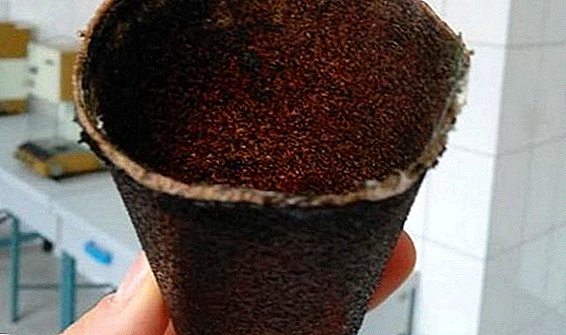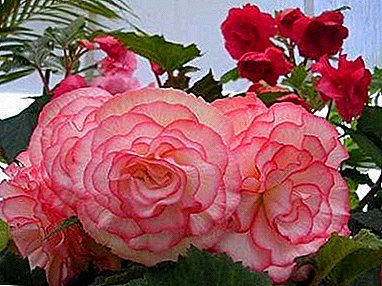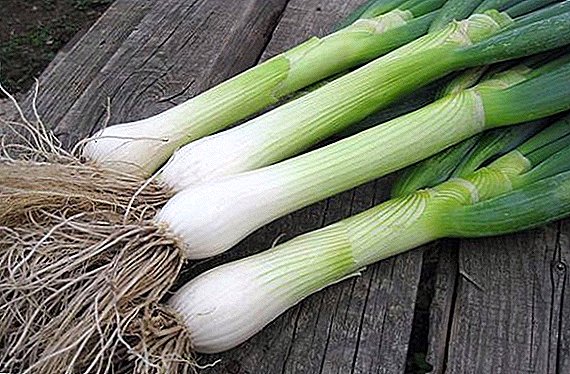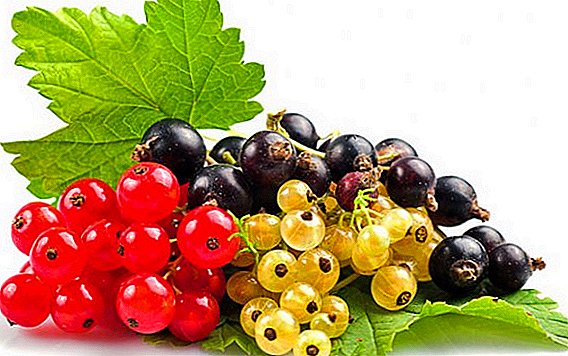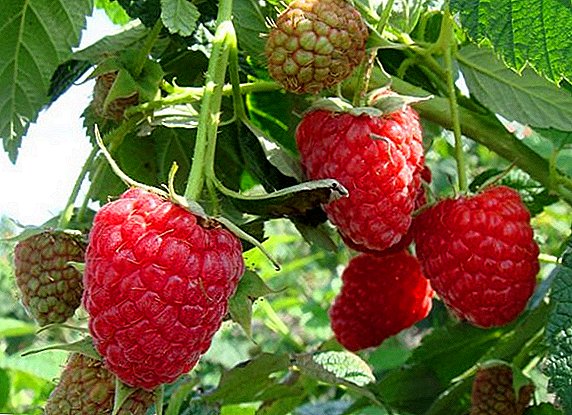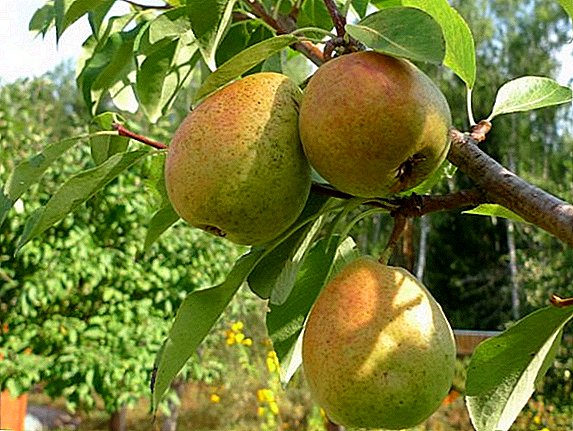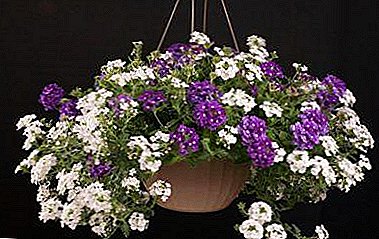
The best option for landscaping balconies, terraces, and garden plots is ampelous plants: their hanging shoots are spectacular, and bright flowers attract attention from afar. One of these plants is a variety of well-known and popular flower - vervain.
Next, tell about the care of the ampelous verbena of different colors - white, pink, red and others, as well as reproduction by seeds and cuttings. We will show the best varieties in the photo, so that it would be easier for you to choose the most beautiful ones for your garden plot.
Botanical characteristics and history of appearance
Annual herb of the Verben family. The flowers are small (1.5 - 2 cm in diameter), each has 5 petals with thorns. Together, they form inflorescences consisting of 30-50 small flowers.
Their coloring is diverse:
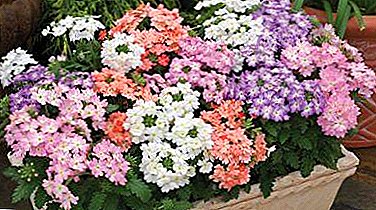 blue;
blue;- red;
- purple
- yellow;
- salmon;
- pink
Flowers can be monophonic or with light impregnations in the middle. The shape of dark green leaves is oblong-oval or serrated; they are rather dense and pubescent. A light brown or greenish fruit resembles a nutlet, which subsequently splits into 4 parts.
The homeland of the plant is South and North America, from where it successfully migrated to Europe, the countries of the Mediterranean, Central Asia and the Far East. Such popularity is due to the simplicity of the plant, its long flowering, an extensive palette of colors, rapid growth and spectacular views. In warm countries, this flower does not know the state of rest, but in our latitudes it is grown as an annual plant.
Features of the form
The main feature of the plant is the falling stems.whose length reaches 60 cm. The main purpose is growing in hanging pots, pots, hanging boxes and baskets for the purpose of gardening balconies, terraces, gazebos.
Another feature of this plant:
- the flower is food for caterpillars and butterflies;
- actively used in medicine (improves appetite, activates brain activity, treats boils);
- in cooking (used to give pickled cucumbers a special flavor);
- in the household (verbena - an excellent honey plant).
Description and photo varieties
Ampel verbena is an ornamental plant, which is a relatively recent selection result, but already has about 250 varieties. The most popular of them should be attributed.
Imagination

Variety of ampelous vervain, creeping shoots which reach 50 cm in length. Purple-purple inflorescences are similar in shape to the ball. This variety is characterized by rapid vegetative growth, therefore it is often used not only for vertical gardening, but also as a soil-covering culture.
The variety is characterized by increased resistance to adverse weather conditions. Marked quality mark "Fleurselekt".
Tiara Red Impr (Red Imperial Crown)

Ampelnaya plant attracts the attention of the brightness and richness of color. Scarlet lush inflorescences look spectacular against the background of gray-green carved foliage. Flowering - long and abundant. It is unpretentious in leaving, possesses the increased resistance to frosts (to-3C) and a drought.
Lenai Candy Kay

Verbena of the ampelous series, the length of the stems is 45 cm. The flowers are large, multi-colored: on a white background there is a red-crimson core in the shape of a star. It has a delicate berry aroma.
Moon River

Ampel variety of vervain, whose shoots are 45 cm long. The color of the inflorescences is lavender. Actively used for decorative purposes..
Peach and cream

Ampelnaya plant, characterized by a combination of apricot, cream, yellow and orange flowers in one inflorescence.
This variety was awarded the gold medal "Fleurselekt" in 1992.
We offer to watch a video about the peach and cream verbena variety:
Mammut

One of the oldest varieties. Its distinctive feature: on half-meter shoots elongated inflorescences are located.
Tropic

Ampelnaya verbena bright red color.
Temari

Hanging branched shoots of ampelous species bear lilac-purple, purple inflorescences.
The variety is resistant to fungal infections.
Tapien

The plant is characterized by creeping branched shoots, long and intensive flowering, unpretentiousness, sufficient resistance to adverse environmental factors.
The Snow Queen

A mixture of ampelous vervain, numbering up to five colors of inflorescences.
Conditions of detention and care
- Lighting. Ampel verbena loves well-lit places where she will have enough light and heat. Otherwise, the flowering can not wait - all the forces of the plants will go on building up green mass.
- Air and temperature. This plant is resistant to adverse external factors, including fluctuations in air temperature: it tolerates drought well and can withstand frosts down to -3 ° C.
- The soil. Ampel verbena does not impose special requirements on the soil. But it is better if the soil is loose and light. This effect can be achieved by adding sand to ordinary garden soil.
- Watering. The flower loves moderate but systematic watering. The best option is to prevent the topsoil from drying out, especially during extreme heat. Enough to water the plant three times a week.It is possible to mulch shavings with sawdust, moss or rotted leaves in order to delay moisture in the soil. With the onset of autumn, watering usually stops.
- Top dressing. Like all plants, ampelous varieties of verbena need additional nutrition. During the period of active growth of deciduous mass, the plant should be fed with fertilizers with a large percentage of nitrogen, and during the flowering period complex fertilizers will be needed, the components of which will be potassium, phosphorus, manganese.
The use of organic matter is possible, especially for vervain, planted in open ground. It will be sufficient to pre-fertilize the soil with humus before planting (5 kg per 1 square meter). Fertilizers are usually applied 3-4 times per season.
Planting and transplanting
The optimal time for planting is May-June.. When planting vervain in a pot, one should proceed from its volume:
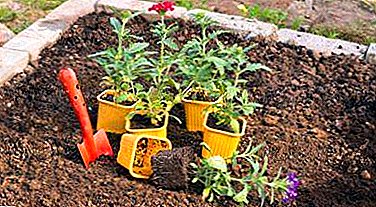 in a five-liter capacity should be planted 2 - 3 shoots;
in a five-liter capacity should be planted 2 - 3 shoots;- for seven-liter seedlings the number can be increased to 4 - 5.
When planting in open ground, the ampelous begonia is planted with a density of 40 plants per 1 square meter, making indentations between seedlings of 25-30 cm.
The best way to plant a plant is to transfer the plant.. The essence of this method is to move the plant from one place to another along with an earthy clod, thus avoiding injury to the root system.
Breeding
The main methods of reproduction of ampelous verbena are grafting and propagation by seeds.
Cuttings
A parent plant, extracted from the ground along with an earthy ball, should be provided with wintering indoors, where the average temperature in the cold season varies between +5 - + 10С.
- In February-March, the apical portion with 5-6 leaflets is cut from the shoots.
- Be sure to between the lower node on the handle and the cut should be a distance of 1 cm.
- The lower leaves should be cut from the cutting, process its tip with a root formation stimulator and bury it in loose soil (sand and peat 1: 1 ratio) to the lower pair of cut leaves.
- From above, the container is covered with glass or polyethylene to create a greenhouse effect: the "greenhouse" is systematically opened for ventilation.
- The soil is moistened as the upper layer dries.
The rooting process lasts about 20 to 30 days, after which young shoots can be planted in a permanent place.
We offer to watch a video about cutting the ampelous vervain:
Seeds
This method of reproduction is usually carried out 2 months before the planting of the ampelous begonia at a permanent place (February - March). Verbena seeds have good germination rates.
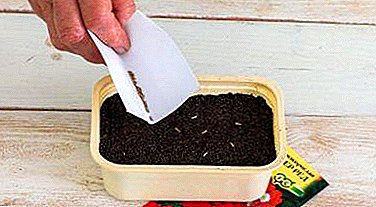 For their germination, it is necessary to fill a shallow container with sand (perlite), moisten it.
For their germination, it is necessary to fill a shallow container with sand (perlite), moisten it.- Place seeds on the surface, without deepening and without rubbing them with the substrate.
- After the container is covered with glass or plastic wrap to create conditions close to the greenhouse, and put it in a warm place (the temperature should not be below + 25C).
- Systematically shelter should be opened, ventilated container in order to prevent putrefaction.
- When the first shoots appear (in 20-30 days), the temperature can be lowered by 5 degrees, the glass can be removed, and the seedlings can be provided with good lighting (the fitball can be used).
- Then each plant should be dived (after the appearance of 2 true leaves) in separate containers.
- After the release of 5 - 6 (7 - 8 cm) leaves, nip is done (the tip of each shoot is broken off to ensure future good branching of the bush).
Diseases and growing problems
It is also possible damage to rot, black legs, spotting, but these cases are infrequent. To help cope with such problems can special drugs sold in specialized stores (Fundazol, Saprol).
Ampel verbena is subject to attacks by aphids.. This pest can be fought with the help of purchased means, and also with popular methods: 300-400g of laundry soap is rubbed on a grater and stirred with 10 liters of water. The solution should be washed with the leaves of the affected plant louse.
A bright cascade of multicolored flowers of ampelous vervain will decorate any infield or balcony. In addition, the unpretentiousness of the plant, its disease resistance make verpel ampelnaya one of the most popular flowers in the world.


 blue;
blue; in a five-liter capacity should be planted 2 - 3 shoots;
in a five-liter capacity should be planted 2 - 3 shoots; For their germination, it is necessary to fill a shallow container with sand (perlite), moisten it.
For their germination, it is necessary to fill a shallow container with sand (perlite), moisten it.